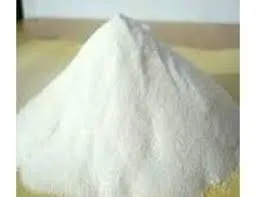
Oct . 05, 2024 03:48 Back to list
uses of hydroxypropyl methylcellulose
Uses of Hydroxypropyl Methylcellulose Versatility in Various Industries
Hydroxypropyl methylcellulose (HPMC) is a semi-synthetic polymer derived from cellulose, which is one of the most abundant natural polymers on Earth. This versatile compound is widely used across numerous industries due to its unique properties, including its ability to form films, thicken solutions, and stabilize emulsions. Its applications span construction, pharmaceuticals, food, and personal care, making it an essential ingredient for many consumer products.
Uses of Hydroxypropyl Methylcellulose Versatility in Various Industries
The pharmaceutical industry also heavily relies on HPMC due to its versatility and safety profile. It is used as a binder in tablet formulations, aiding in the cohesive quality of the active ingredients. The polymer's flexibility in adjusting viscosity makes it suitable for controlled-release drug delivery systems. Furthermore, HPMC is often used in ophthalmic solutions as a lubricant, providing relief for dry eyes due to its ability to maintain moisture on the eye surface. Its biocompatibility and non-toxic nature make HPMC a preferred choice for pharmaceutical applications, particularly in products that require safe interaction with the human body.
uses of hydroxypropyl methylcellulose

In the food industry, HPMC serves multiple purposes. It is widely utilized as a food additive to improve texture, stability, and mouthfeel in various products ranging from sauces to baked goods. As a thickening agent, it enhances the viscosity of sauces, giving them a desirable consistency. Additionally, HPMC acts as a fat replacer in low-fat and reduced-calorie products, allowing for a creamier texture without increasing caloric content. Its properties as an emulsifier also help to maintain the uniform distribution of ingredients in products like dressings and spreads.
The cosmetic and personal care industries have also embraced the use of HPMC for its emulsifying and thickening properties. It is commonly found in creams, lotions, and gels, where it helps to stabilize the formulation and enhance the application experience. As a film-forming agent, HPMC contributes to the longevity of make-up products by creating a barrier on the skin, ensuring better adherence. Furthermore, its ability to retain moisture makes it beneficial in products designed for hydrating the skin, offering consumers effective solutions for maintaining healthy skin.
Moreover, HPMC is an environmentally friendly alternative due to its renewable source—cellulose—and its biodegradable nature. As consumer awareness of sustainability continues to rise, HPMC provides an attractive option for manufacturers seeking to reduce their environmental impact. The ongoing research and development in the field also promise innovative applications that can further enhance its utility across various sectors.
In conclusion, hydroxypropyl methylcellulose is a highly versatile compound that serves critical roles in construction, pharmaceuticals, food, and personal care industries. Its ability to modify viscosity, form stable emulsions, and enhance product performance makes it indispensable in the formulation of many consumer goods. As industries evolve and seek sustainable options, HPMC's natural derivation and eco-friendly properties position it well for continued relevance and growth in the future.
-
Versatile Hpmc Uses in Different Industries
NewsJun.19,2025
-
Redispersible Powder's Role in Enhancing Durability of Construction Products
NewsJun.19,2025
-
Hydroxyethyl Cellulose Applications Driving Green Industrial Processes
NewsJun.19,2025
-
Exploring Different Redispersible Polymer Powder
NewsJun.19,2025
-
Choosing the Right Mortar Bonding Agent
NewsJun.19,2025
-
Applications and Significance of China Hpmc in Modern Industries
NewsJun.19,2025







